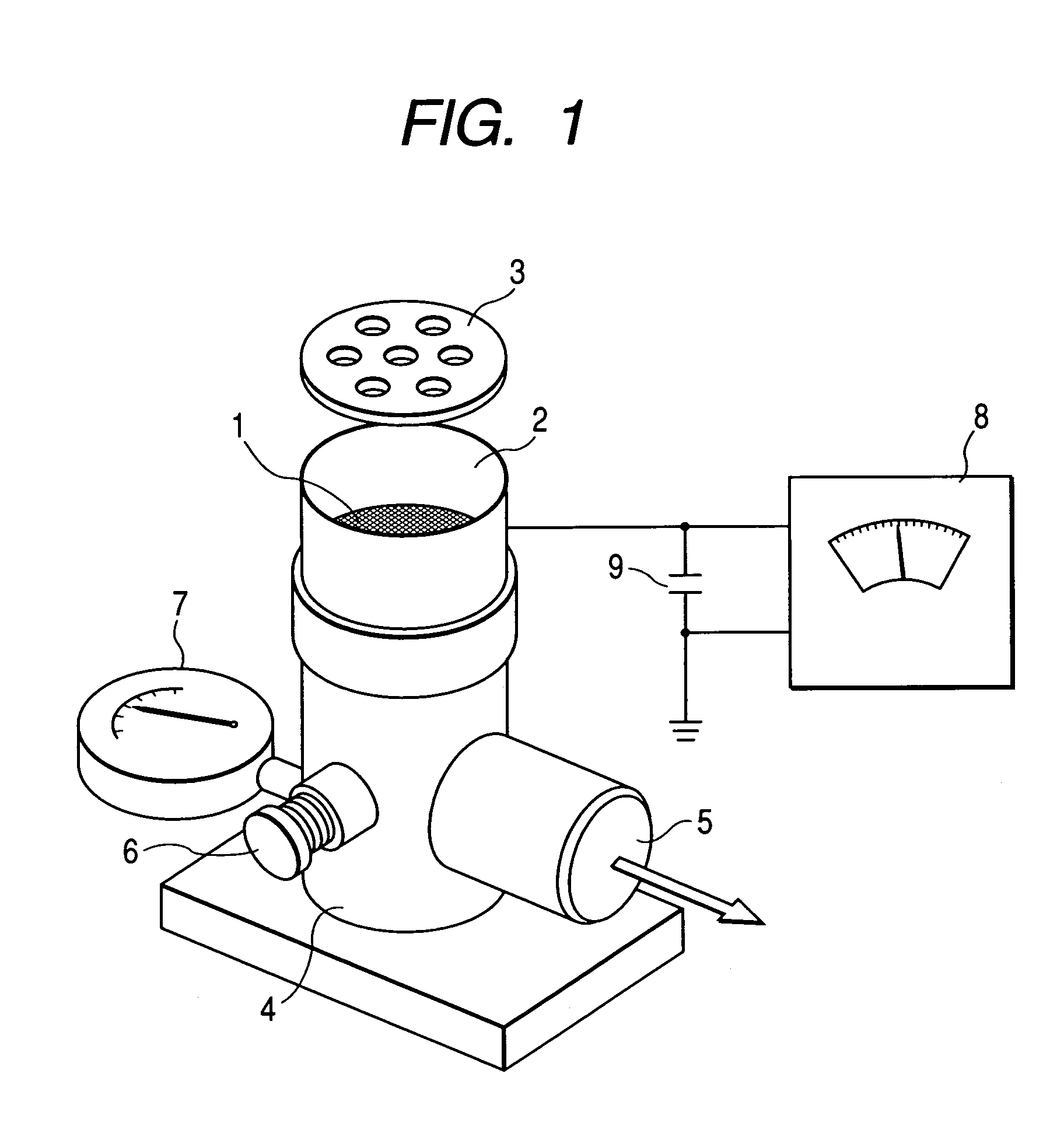Toner
a technology of toner and pigment, applied in the field of toner, can solve the problems of high-temperature offset resistance, high-temperature offset resistance, and high-demand on image quality, and achieve the effects of improving the dispersibility of pigments, stable chargeability of toner particles, and improving the dispersibility of colorants
- Summary
- Abstract
- Description
- Claims
- Application Information
AI Technical Summary
Benefits of technology
Problems solved by technology
Method used
Image
Examples
production example 2
of the Aromatic Carboxylic Acid Titanium Compound
[0159]There was adopted the same manner as in the production example 1 of the aromatic carboxylic acid titanium compound, except that 17.2 parts by mass of titanium tetramethoxide was replaced with 34.0 parts by mass of titanium tetra-n-butoxide. The produced butanol was distilled off, and the reaction was allowed to proceed to yield aromatic carboxylic acid titanium compound 2.
Production Example 3 of the Aromatic Carboxylic Acid Titanium Compound
[0160]Aromatic carboxylic acid titanium compound 3 was obtained in the same manner as in the production example 1 of the aromatic carboxylic acid titanium compound, except that isophthalic acid was replaced with terephthalic acid.
Production Example 4 of the Aromatic Carboxylic Acid Titanium Compound
[0161]Aromatic carboxylic acid titanium compound 4 was obtained in the same manner as in the production example 1 of the aromatic carboxylic acid titanium compound, except that 66.4 parts by mass o...
production example 3
of the Resin Having Polyester Units
[0171]As the components to produce the polyester unit, 5.2 mol of polyoxypropylene(2.2)-2,2-bis(4-hydroxyphenyl)propane, 1.8 mol of terephthalic acid, 2.5 mol of dodecenylsuccinic acid, 0.5 mol of trimellitic anhydride, and 1.0 g of aromatic carboxylic acid titanium compound 3 as a catalyst were placed in a 4-liter four-necked glass flask. The flask was equipped with a thermometer, a stirring rod, a condenser and a nitrogen inlet tube and placed in a mantle heater. The reaction mixture was allowed to react in an atmosphere of nitrogen at 230° C. for 6 hours to yield Resin 3 having polyester units. The content of the polyester unit component in Resin 3 concerned was found to be 100% by mass. The physical properties of Resin 3 having polyester units are shown in Table 2.
production example 4
of the Resin Having Polyester Units
[0172]There was adopted the same manner as in the production example 3 of the resin, except that in place of 1.0 g of aromatic carboxylic acid titanium compound 3, 0.1 g of aromatic carboxylic acid titanium compound 10 was used, to yield Resin 4 having polyester units. The content of the polyester unit component in Resin 4 concerned was found to be 100% by mass. The physical properties of Resin 4 having polyester units are shown in Table 2.
PUM
| Property | Measurement | Unit |
|---|---|---|
| transmittance | aaaaa | aaaaa |
| temperature | aaaaa | aaaaa |
| temperature | aaaaa | aaaaa |
Abstract
Description
Claims
Application Information
 Login to View More
Login to View More - R&D
- Intellectual Property
- Life Sciences
- Materials
- Tech Scout
- Unparalleled Data Quality
- Higher Quality Content
- 60% Fewer Hallucinations
Browse by: Latest US Patents, China's latest patents, Technical Efficacy Thesaurus, Application Domain, Technology Topic, Popular Technical Reports.
© 2025 PatSnap. All rights reserved.Legal|Privacy policy|Modern Slavery Act Transparency Statement|Sitemap|About US| Contact US: help@patsnap.com



